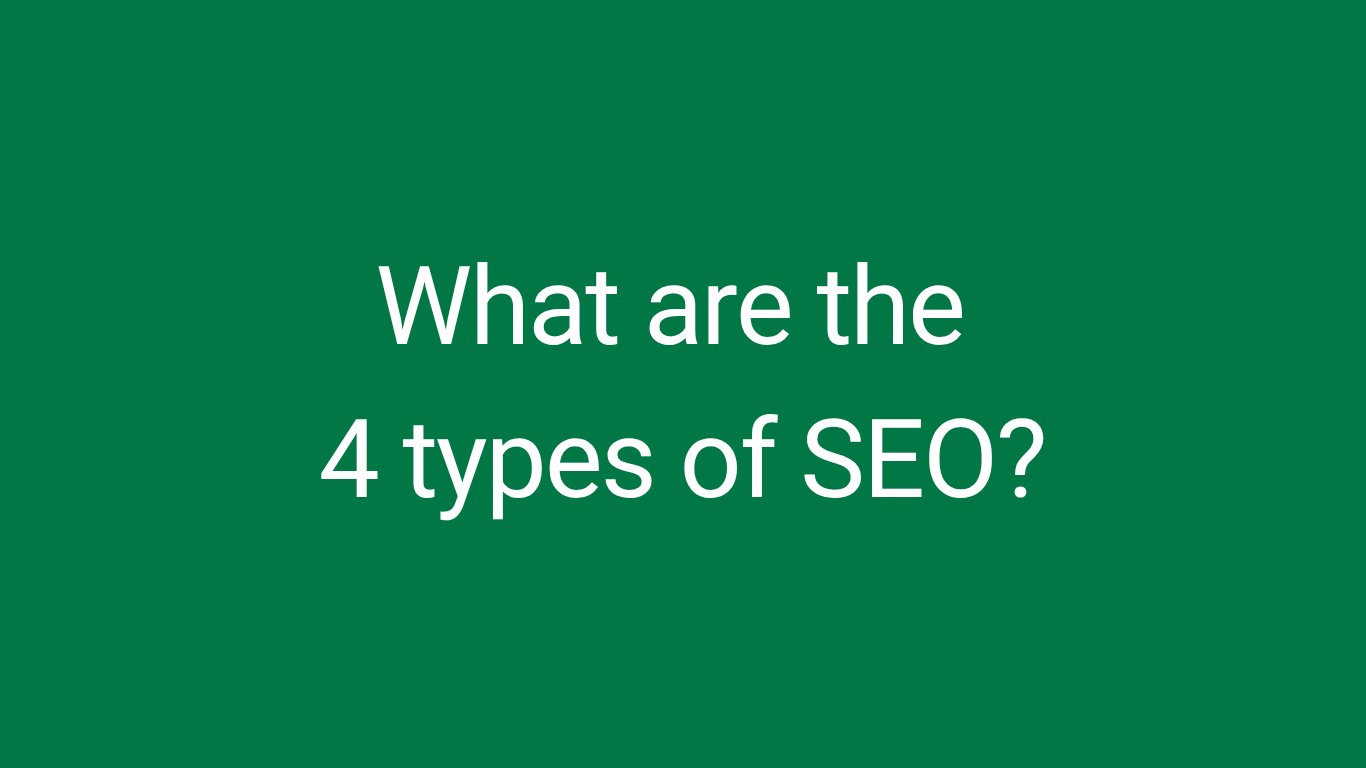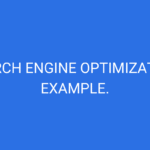
What are the 4 types of SEO?
Introduction to SEO
4 types of SEO is a fundamental concept in the realm of digital marketing that involves optimizing websites and online content to enhance visibility on search engines such as Google, Bing, and Yahoo. In a world where the majority of web traffic is driven by search engines, the significance of SEO cannot be overstated. Businesses strive to ensure that their websites rank highly on search engine results pages (SERPs), as higher visibility correlates with increased traffic, brand awareness, and potential revenue growth.
Table Of Content
The primary goal of SEO is to improve organic traffic to a website, distinguishing it from paid advertising methods. This organic approach entails refining various elements of a website, including content quality, structure, and user experience, along with establishing relevant backlinks. By adhering to search engines’ best practices, companies can elevate their position in SERPs, which ultimately drives more visitors to their sites.
Moreover 4 types of SEO an effective SEO strategy helps businesses connect with their target audience in a more meaningful way. By leveraging keyword research, companies can uncover what terms and phrases potential customers are searching for, allowing them to tailor their online content accordingly. This targeted approach not only enhances website visibility but also fosters a deeper engagement with consumers seeking specific information or solutions.
In light of the increasing competition within the digital landscape, businesses cannot afford to overlook the importance of SEO. It plays an invaluable role in defining a company’s online presence and in facilitating growth by attracting prospective clients. With the right SEO strategies in place, organizations can establish a robust foundation for their digital marketing efforts, leading to long-term success in the ever-evolving online marketplace.
What are the 4 types of SEO?
-
On-Page SEO (4 types of SEO)
4 types of SEO – On-Page SEO, also known as on-site SEO, refers to the practice of optimizing individual web pages to improve their search engine rankings and drive relevant traffic. This optimization encompasses several critical components, including keyword optimization, content quality, website structure, meta tags, and user experience. Each of these elements plays a vital role in ensuring that a page is not only discoverable by search engines but also appealing to visitors.
Keyword optimization is the foundation of effective On-Page SEO. Identifying the right keywords that potential visitors are searching for is crucial. This process involves thorough keyword research to determine the terms and phrases that are most relevant to your content. Once the appropriate keywords are identified, they should be naturally incorporated into various parts of the webpage, including headings, body text, and image alt attributes. It’s important to strike a balance; overusing keywords can lead to penalties from search engines, whereas a well-placed keyword can enhance visibility.
Content quality is another essential factor that significantly impacts On-Page SEO. Search engines prioritize high-quality, informative, and engaging content. Therefore, it is imperative to create pages that not only meet the expectations of the target audience but also provide value. Content should be original, well-researched, and updated regularly to maintain relevance and authority in the niche.
In addition to these aspects, website structure plays a pivotal role. A well-organized website makes it easier for both users and search engines to navigate. Utilizing clean URLs, proper headings, and a logical layout contributes to improved On-Page SEO. 4 types of SEO incorporating meta tags, such as title tags and meta descriptions, further enriches search engine listings and influences click-through rates. Lastly, enhancing user experience through fast loading times, mobile responsiveness, and intuitive design is essential for retaining visitors and reducing bounce rates.
-
Off-Page SEO
Off-Page SEO refers to the actions taken outside of your own website to impact your rankings within search engine results pages (SERPs). Unlike on-page SEO, which focuses on optimizing elements within a webpage, off-page SEO primarily involves activities designed to improve the perceived authority and relevance of your site. Understanding and effectively implementing off-page SEO is integral to achieving a higher position in search results.
One of the most critical components of off-page SEO is link building. 4 types of SEO Backlinks or inbound links from other websites, serve as votes of confidence for your site’s credibility and value. Search engines like Google use these backlinks as a significant ranking factor; the more quality backlinks you have, the greater your site’s authority in the eyes of search engines. Therefore, businesses must prioritize acquiring quality backlinks from reputable sources, which can be pursued through methods such as guest blogging, partnerships, and engaging with industry influencers.
4 types of SEO another vital aspect of off-page SEO is social media marketing. While social media signals may not directly influence search rankings, a strong social presence can massively enhance your off-site optimization efforts. Sharing content on social platforms increases brand visibility, driving traffic to your site and potentially attracting backlinks organically. Moreover, an active social media presence boosts engagement, allowing you to connect more deeply with your audience and build brand loyalty.
Online reputation management also plays a crucial role in off-page SEO. Maintaining a positive image across various online platforms can influence customer perceptions and search rankings. Engaging with reviews, managing feedback, and participating in discussions about your brand are essential to sustaining a good reputation, which indirectly supports your SEO objectives. By employing these strategies effectively, businesses can improve their SEO performance, facilitating better engagement and conversion rates.
-
Technical SEO
4 types of SEO – Technical SEO encompasses the back-end structure and foundation of a website, playing a crucial role in how search engines crawl and index its content. Key elements of technical SEO include website speed, mobile optimization, XML sitemaps, and secure connections (HTTPS). Each of these factors contributes to the overall user experience and the effectiveness of a site in ranking on search engine results pages (SERPs).
A primary aspect of technical SEO is website speed, which refers to how quickly a web page loads. Studies indicate that faster-loading pages lead to lower bounce rates and higher user satisfaction. Search engines, notably Google, prioritize quick-loading sites in their ranking algorithms. As such, webmasters should ensure their pages are optimized to load swiftly, utilizing techniques such as image compression, browser caching, and reducing server response times.
Mobile optimization is another critical aspect of technical SEO, taking into account the increasing number of users accessing the web via mobile devices. A mobile-friendly website that adapts seamlessly to different screen sizes not only enhances user experience but also aligns with Google’s mobile-first indexing approach. Employing responsive design and optimizing content for mobile viewing are effective ways to ensure that your site meets these standards.
4 types of SEO XML sitemaps serve as a blueprint for search engines, providing information about the pages, videos, and other files on the site. By submitting an XML sitemap, webmasters can assist search engines in understanding the structure of a site and identifying new or updated content, facilitating better indexing. Additionally, implementing secure connections through HTTPS ensures that user data is protected during transmission. This factor contributes to trustworthiness, which is increasingly becoming a ranking criterion.
-
Local SEO
4 types of SEO – Local Search Engine Optimization (Local SEO) is a crucial marketing strategy aimed at increasing a business’s visibility within geographic locations. It focuses on optimizing websites for search engines to attract more local customers, which can significantly enhance foot traffic and ultimately boost sales. Businesses can ensure they are visible in local searches through various techniques, among which Google My Business (GMB) management stands out as a fundamental component.
Creating and optimizing a Google My Business listing allows businesses to appear in local search results and Google Maps. By ensuring accuracy in the listing details—such as the business name, address, and phone number (often abbreviated as NAP)—organizations can effectively target customers searching for services in their vicinity. In addition to NAP, GMB listings should include business categories, hours of operation, and high-quality images to attract potential customers.
Another essential aspect of Local SEO involves local citations, which refer to any mention of a business’s NAP on other websites, directories, or social media platforms. Ensuring that these citations are consistent and accurate enhances search engines’ trust in the business’s information, positively impacting its local search rankings. Local citations improve visibility by helping search engines recognize the authority and relevance of the business within the local community.
Moreover, the significance of online reviews cannot be overstated. Positive reviews and high ratings not only influence potential customers but also improve a business’s local search ranking. Encouraging satisfied customers to leave feedback creates a substantial online presence, which signals credibility to both search engines and prospective clients. By actively managing reviews and responding to customer feedback, businesses can foster a favorable reputation and nurture customer relationships.
The Role of Content in 4 types of SEO
SEO content is a fundamental component of search engine optimization (SEO), influencing various types, including On-Page, Off-Page, and Local SEO. High-quality, relevant content not only drives traffic but also engages users effectively, fostering a positive user experience. By providing valuable information that meets search intent, websites can improve their search rankings and attract a steady stream of organic visitors.
4 types of SEO in On-Page SEO, the focus is on content optimization elements such as keywords, headings, and meta descriptions. Crafting well-structured content that incorporates relevant keywords enhances visibility in search engine results pages (SERPs). Additionally, content length, readability, and engagement metrics like time spent on the page contribute to how search engines assess the value of a webpage. Engaging content often leads to lower bounce rates and higher conversion rates, as users are inclined to stay on pages that provide answers and solutions to their queries.
Off-Page SEO also heavily relies on content. Creating shareable, informative articles, infographics, and videos can encourage backlinks from other authoritative sites, boosting credibility and rankings. Quality content naturally invites social sharing, discussions, and even online mentions, further enhancing a website’s digital footprint.
Local SEO places a premium on localized content. Businesses can improve their visibility within local searches by producing content that speaks directly to their community. This may involve using location-based keywords, showcasing local events, or addressing issues pertinent to local consumers. A well-defined content strategy tailored to the specific nuances of Local SEO can significantly elevate a business’s discoverability among local users.
In conclusion, a robust content strategy is essential across all types of SEO. By focusing on the creation and optimization of valuable content, businesses can effectively enhance their search engine visibility, attract targeted traffic, and engage their audience more meaningfully.
Measuring of SEO Success
Measuring the success of search engine optimization (SEO) strategies is paramount for understanding their effectiveness and making informed decisions. Key performance indicators (KPIs) are critical metrics used to evaluate performance in SEO. Among the most important KPIs are organic traffic, bounce rates, and search engine rankings, each providing unique insights into a website’s performance.
Organic traffic refers to the number of visitors who arrive at a website through unpaid search engine results. Tracking organic traffic gives marketers a clear indication of how well their SEO efforts are driving visitors to their site. High organic traffic typically signals that the website is optimized effectively for relevant keywords and is providing valuable content to its audience.
Bounce rate, another essential KPI, measures the percentage of visitors who leave a website after viewing only one page. A high bounce rate may indicate that the landing pages are not engaging or relevant to the users’ intents. By analyzing bounce rates, businesses can adjust their content or website design to better retain visitors and encourage them to explore further.
Search engine rankings are perhaps the most visible metric of SEO success. Monitoring rankings for targeted keywords allows businesses to assess their visibility within search engine results pages (SERPs). Fluctuations in rankings can be analyzed to determine the impact of specific SEO strategies and to identify areas needing improvement.
Various tools can be utilized to analyze these metrics, with Google Analytics and Google Search Console being among the most popular and powerful. Google Analytics provides insights into user behavior, traffic sources, and conversions, while Google Search Console offers data on search performance, including clicks, impressions, and average rankings. Utilizing these tools effectively enables businesses to track performance, adjust their SEO strategies as needed, and ultimately drive better results in their search engine visibility.
Common 4 types of SEO Mistakes to Avoid
4 types of SEO in the realm of search engine optimization (SEO), businesses often encounter various pitfalls that can significantly hinder their online visibility and effectiveness. One of the most prevalent mistakes is keyword stuffing. While it is essential to incorporate relevant keywords into content for optimization, overusing them can lead to a poor user experience and may even result in penalties from search engines. It is crucial to strike a balance by using keywords naturally, ensuring that the content remains engaging and informative for the audience.
Another critical error is neglecting mobile optimization. With an increasing number of users accessing websites through mobile devices, having a mobile-friendly site is no longer optional; it is a necessity. Websites that do not perform well on mobile platforms tend to experience higher bounce rates and lower rankings in search results. Therefore, businesses must prioritize responsive design and fast loading times to cater to this growing audience effectively.
What are the 4 types of SEO? Ignoring local SEO strategies is another common oversight that can lead to missed opportunities, especially for brick-and-mortar businesses. With local searches on the rise, optimizing for local search results, including creating a Google My Business profile, can greatly enhance visibility in localized searches. Businesses should focus on incorporating local keywords, maintaining updated contact information, and encouraging customer reviews to improve their local SEO performance.
Additionally, failing to analyze and adapt to performance metrics is a significant mistake. Regularly monitoring key performance indicators (KPIs) such as organic traffic, bounce rates, and conversion rates allows businesses to assess the effectiveness of their SEO strategies. By adapting and refining their approaches based on these insights, companies can continuously enhance their online presence and achieve better results.
Conclusion and Future of SEO
In this comprehensive guide on the 4 types of SEO – on-page, off-page, technical, and local SEO. We have elucidated the vital roles each plays in enhancing a website’s visibility and performance in search engine results. On-page SEO emphasizes the importance of optimizing individual web pages, while off-page SEO focuses on the value generated from external sources that contribute to a site’s authority. Technical SEO is critical for ensuring that a website is easily crawled and indexed, thereby enhancing user experience. Local SEO has increasingly gained traction as a means for businesses to attract local clientele, ensuring they appear prominently in geographically relevant searches.
As we look to the future of SEO, several trends are anticipated to shape its evolution. One notable trend is the rise of voice search, which is expected to influence how keyword strategies are formulated. With more users opting for voice-activated technologies, the focus will shift towards conversational phrases and long-tail keywords that mimic natural speech patterns. Additionally, artificial intelligence (AI) is becoming integral to search algorithms, enhancing their ability to interpret user intent and deliver more relevant results. This evolution necessitates that marketers remain vigilant and adaptable, continuously refining their SEO strategies in alignment with these advancing technologies.
The future 4 types of SEO also highlights the growing importance of user experience (UX) as a ranking factor. Search engines are continually prioritizing sites that offer seamless navigation and valuable content. Prompting businesses to invest more in UX design. In conclusion by keeping a pulse on these trends and adapting accordingly, marketers can position themselves to capitalize on opportunities in the ever-changing landscape of SEO.





Thanks for explaining the funnel stages so clearly.